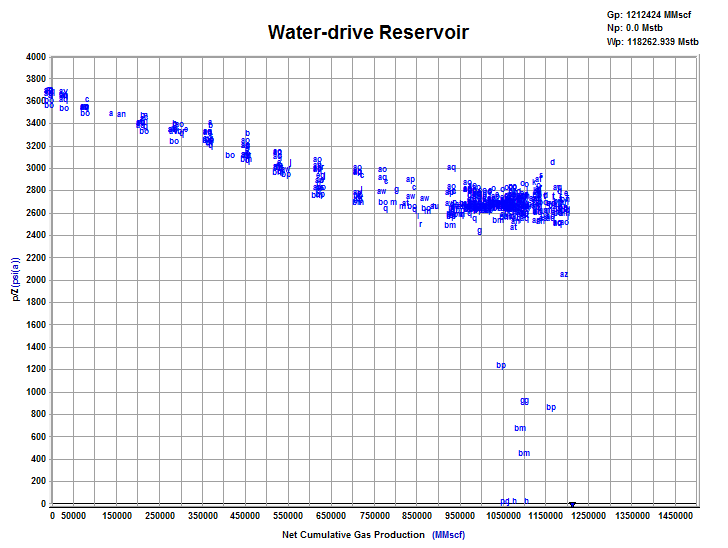Some gas reservoirs may be connected to aquifers that provide pressure support to the gas reservoir as it is depleted. In this case, the pressure decrease in the gas reservoir is balanced by water encroaching into the reservoir. As this happens, the pore volume of gas is decreasing and the average reservoir pressure is maintained. Often this reservoir will show a flat pressure trend after some depletion. An example of this behavior on a p/Z plot is shown below.

The change in reservoir volume due to net encroached water can be determined from the following equation:
To use this in the material balance, the change in pore volume is taken relative to the initial pore volume, shown below.
When dealing with this equation, the major unknown value to be determined is water encroachment from the aquifer (We). Two aquifer models are provided to determine net encroached water: Schilthuis Steady-State Model and Fetkovich Model.
Schilthuis steady-state model
This is the simplest aquifer model and assumes that the rate of water influx is proportional to pressure drawdown. In this model, it is assumed that the aquifer volume is much larger than the gas reservoir and remains at the initial pressure.
Using this model, the only parameter to solve for is the transfer coefficient (J).
Fetkovich
In the Fetkovich aquifer, the aquifer is assumed to be in pseudo-steady state and depleted according to the material balance equation. In this model, both the aquifer volume and transfer coefficient must be determined. The equations are shown below.
While the transfer coefficient is defined, the required inputs to calculate the transfer coefficient are often not known. More commonly the transfer coefficient is determined as part of matching the p/Z plot.